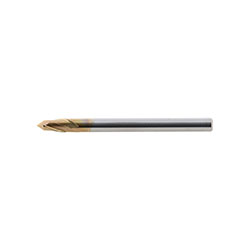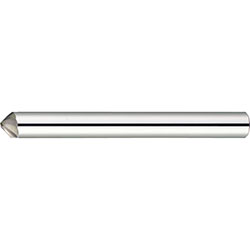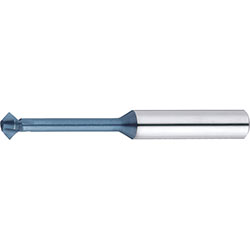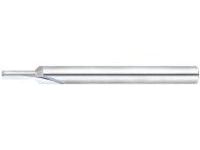(!)Due to
Microsoft's end of support for Internet Explorer 11 on 15/06/2022, this site does not support the recommended
environment.
Instead, please kindly use other browsers like Google Chrome, Microsoft Edge or Mozilla
Firefox.
- Notice of End of Sales for Economy Series Pneumatic Equipment Category. More details.
Best methods for dealing with burrs when withdrawing a tool
Question
What is the best way to deal with burrs created when withdrawing the tool?
Removing burrs created when withdrawing the tool requires considerable time.
Why do burrs form? What methods should be used to deal with burrs that have already been
created, in the shortest possible time?
Answer
Burr formation
A burr is the part of the material that is left protruding into space when the tool is
withdrawn.
Different work materials produce different burrs, with soft materials such as aluminum and
copper alloy forming large burrs, high hardness materials forming small burrs, and cast iron
forming negative burrs (chips).
Other examples include “plucked” burrs, and one could argue that burr formation is an
unavoidable part of milling.
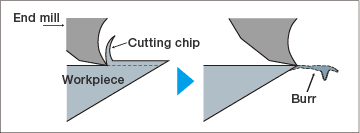
How to control burrs
-
1.Reduce the space in which burrs can form to the absolute
minimum
In order to control burrs that form when the tool is withdrawn, one effective method is to remove the space in which burrs are created by taking measures to make that volume smaller, such as by chamfering the edge when withdrawing the tool. -
2.Controlling burrs through cutting conditions
In order to minimize residual material, the optimal tool and cutting conditions must be selected.- Select a tool with a large rake angle and a sharp cutting edge.
- Raise cutting speed to improve cutting characteristics.
- Particularly when making finishing cuts, minimize the depth of cut and the feed rate.
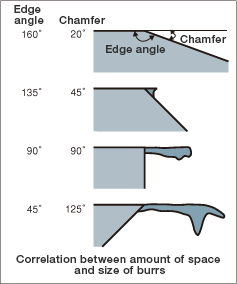
How to remove burrs
Use of a chamfer end mill is an effective way to remove burrs.
